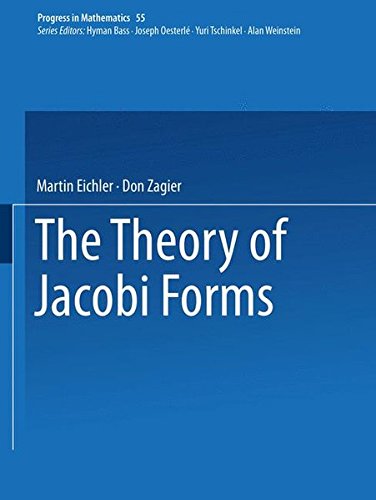The functions studied in this monogra9h are a cross between elliptic functions and modular forms in one variable. Specifically, we define a Jacobi form on SL (~) to be a holomorphic function 2 (JC = upper half-plane) satisfying the t\-10 transformation eouations 2Tiimcz* k CT +d a-r +b z ) (1) ( (cT+d) e cp(T,z) cp CT +d ' CT +d (2) rjl(T, z+h+]l) and having a Four*ier expansion of the form 00 e2Tii(nT +rz) (3) cp(T,z) 2: c(n,r) 2:: rE~ n=O 2 r ~ 4nm Here k and m are natural numbers, called the weight and index of rp, respectively. Note that th e function cp (T, 0) is an ordinary modular formofweight k, whileforfixed T thefunction z-+rjl(-r,z) isa function of the type normally used to embed the elliptic curve ~/~T + ~ into a projective space. If m= 0, then cp is independent of z and the definition reduces to the usual notion of modular forms in one variable. We give three other examples of situations where functions satisfying (1)-(3) arise classically: 1. Theta series. Let Q: ~-+ ~ be a positive definite integer valued quadratic form and B the associated bilinear form.
- ISBN10 0817631801
- ISBN13 9780817631802
- Publish Date 1 January 1985
- Publish Status Out of Print
- Out of Print 20 January 2011
- Publish Country US
- Imprint Birkhauser Boston Inc
- Format Hardcover
- Pages 155
- Language English
